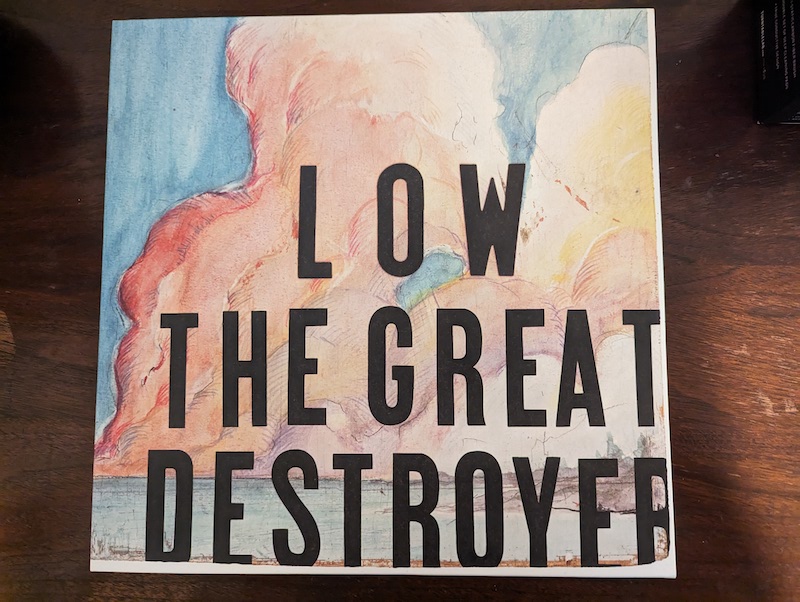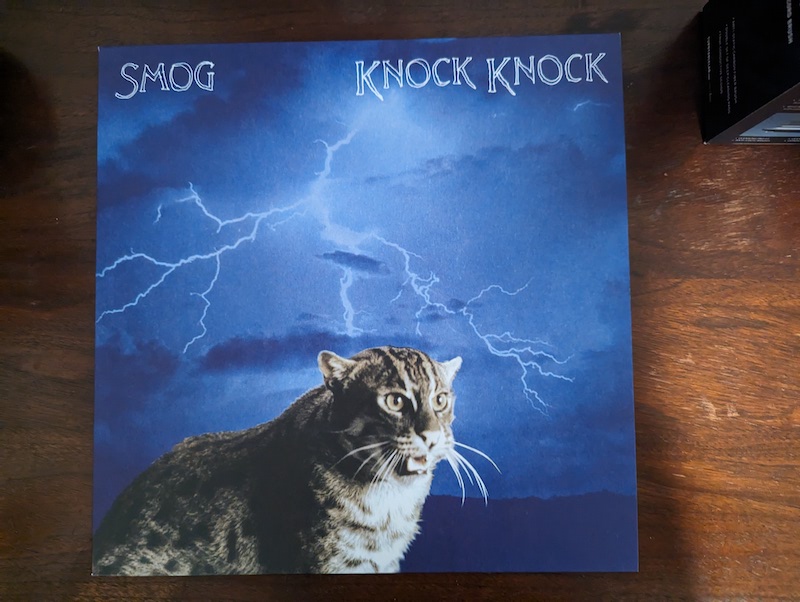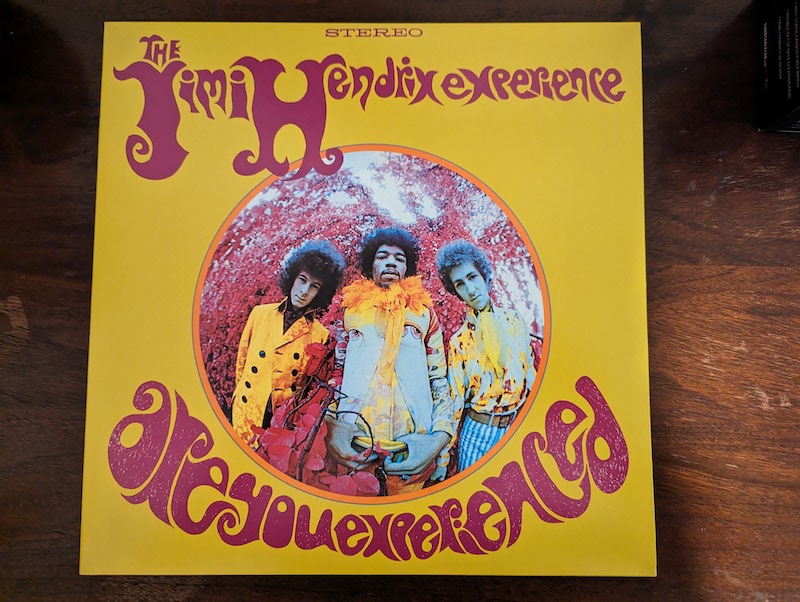The Jimi Hendrix Experience – Are You Experienced?
Everything in today’s post was picked up at Plan 9 on a Friday afternoon in fall of 2021 when I took the afternoon off early and decided it was time to treat myself to some records. I mean, sometimes you gotta.
But boy, where to start with this one? First off, Jimi Hendrix is a legend for a reason—he helped shape the sound of psychedelic rock as we know it, and his brief body of work is pretty much 100 percent amazing. I often think of Are You Experienced? as the album that features the songs that everyone knows, but I’m not sure that’s entirely true; Electric Ladyland has longer and more experimental material, but it also has “Voodoo Chile (Slight Return)” and “All Along the Watchtower.” Still, this one has “Purple Haze,” “Fire,” “Foxy Lady,” “Hey Joe” and “The Wind Cries Mary.” It’s almost a hits collection. And yet, it’s got some awesome deep cuts, like the blazing “I Don’t Live Today,” which is one of my favorites.
As much has been said about Hendrix as a guitar player, and it’s all true, I’m often most impressed with the songs that showcase the trio at their best, locked-in, playing like nobody else could. The standout moment is and will always be “Manic Depression,” which is effortless despite everything that’s happening. Jimi’s throwing in licks and riffs here and there during the verses, making it look just so easy, while Mitch Mitchell plays the waltzing rhythm like a typewriter resetting itself after every verse. It’s one of those songs I’ve heard a thousand times and it never ceases to amaze me. But then again some of the details in the other songs, like the backing vocals on “Hey Joe,” add depth to what might likewise be songs I’ve heard over and over again.
I started listening to Jimi Hendrix after being a big Pearl Jam fan as a kid, and I remember going back to Ten and thinking to myself “ohhhhhhhhh….” Of course, Hendrix was also from Seattle—let’s not forget that important detail. I’m not adding much to a conversation that’s been had a whole lot, but hey, sometimes the canon is 100 percent correct. Which is why, eventually, you need to own a copy. (I’m really slow to pick up the classics—there are Beatles albums in future installments. No foolin’ Beatles albums.)
Rating: 10.0
Sound Quality: Great

Low – The Great Destroyer
I feel like I’ve written about Low a good amount fairly recently, so I don’t have a lot of personal information to add to this, but being that they’re one of my all time favorite bands, I could probably write volumes on the group regardless. I got into Low with Things We Lost in the Fire, and that kind of became the record against which I compared most of their others, though more than 20 years after falling in love with that album, it’s actually a little harder to pick a favorite. There are four that are in regular rotation, and several more that are just bubbling under.
The Great Destroyer is one of them, and I remember instantly loving it and simultaneously thinking it was pretty weird when I first heard it. It’s unusually loud and noisy for a Low record, and it doesn’t have the grace of their slower records from earlier on in their career. So to hear the leadoff track, the barnburning “Monkey,” was a little confusing—is this Low?!—but also exciting. You know, because it kicks ass.
The thing is, despite a few noisier pieces and some more uptempo moments, The Great Destroyer still sounds very much like Low, in large part because of the harmonizing between Alan and Mimi. It was also their first for Sub Pop, released a few months before Sleater-Kinney’s The Woods. Good year for the label, that. So I suppose it doesn’t surprise me that they’d shake up the formula a little with this moment of transition. But some of my favorite songs are the ones that explore the inbetween spaces, like the stormy Crazy Horse twang of “On the Edge Of,” or the density and ominous drone of “Pissing.” This was an interesting turning point, and while it’s maybe only my fifth favorite Low album, that ultimately says more about how strong their catalog is on the whole than of any deficiency on its part.
Rating: 9.2
Sound Quality: Great

Smog – Knock Knock
There’s a thought that occurs to me every few months or so: I don’t have enough Bill Callahan records. And there’s not much I do to fix that problem. I’ve been at a record store before, holding Dongs of Sevotion, but then got distracted by some shiny thing or other and well, you know how it goes. Record shopping is sensory overload sometimes.
As it stands I only have two, Dream River and this one, Knock Knock, released when he was still going by the name Smog. In the early ’90s, Callahan released super lo-fi records that were a lot more emotionally exposed and low budget, but in time he kind of evolved to become this funny, clever, poignant and identifiably baritone elder statesman of indie music, and for that matter, he started writing some really amazing songs. I think the real turning point was probably somewhere around 1996’s The Doctor Came At Dawn, but definitely by 1997’s Red Apple Falls. (Both of those, the latter in particular, are on my to-buy list.)
Knock Knock is maybe his first real masterpiece, an album that goes back and forth between more subdued chamber folk songs and louder rock songs, and just about everything here is amazing. The runaway hit for me is “Held,” which juxtaposes dirty guitar loops over drum loops and creates this sort of earnest, rugged counterpart to Beck through lyrics like “For the first time in my life/I let myself be held/Like a big old baby.” “No Dancing” chugs with heavy metal guitars (and strings!) and “Cold Blooded Old Times” is the kind of slacker rock that indie dorks (like me) ate up throughout the ’90s. But the quieter moments aren’t to be overlooked, like the stunning “River Guard.” I’ve seen Bill Callahan only once, at a festival that was thrown by a nonprofit art collective in Escondido in 2018 and featured an interesting/weird lineup. (No Age, Shabazz Palaces, Lonnie Holley mostly doing improvisational stuff—in hindsight it was pretty rad, actually!) Callahan played solo, just a dude playing acoustic guitar in a Hawaiian shirt, and he had the appearance of someone’s cool-ass uncle. I couldn’t remember off the top of my head if he played anything from this album, but Setlist.fm says that around this time he was playing “Let’s Move to the Country,” and that would have been my first guess. I’ve seen a lot of shows, sometimes the details get a little blurry.
Rating: 9.3
Sound Quality: Great

Leave a comment